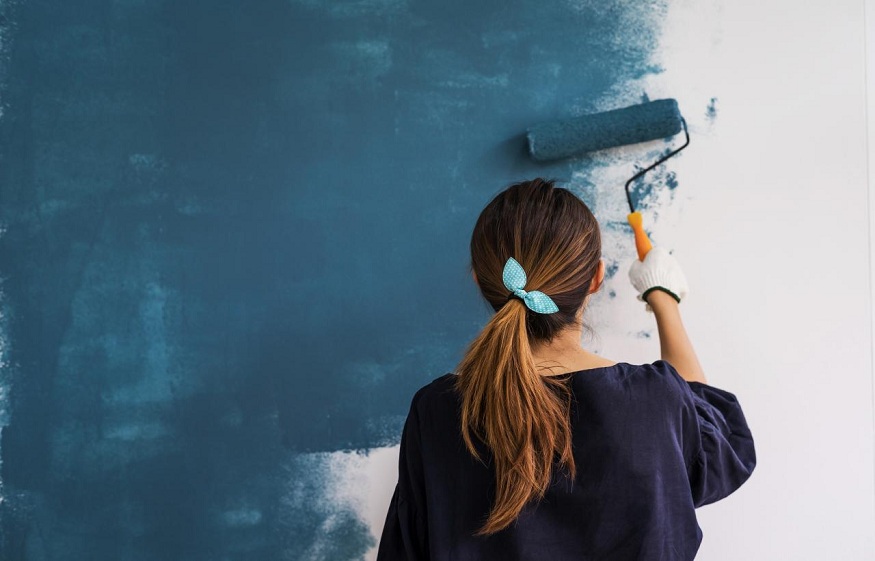Top tips for DIY interior painting
Are you ready to paint your interior walls? Whether it’s due to a renovation or just because you want a fresh look in your home, painting can be a fun and rewarding project. To help you get started, here are some tips for making sure your painting project goes smoothly:
Before You Paint
Before you paint, there are a few things you should do to prepare:
- Clean and dust the area. You want to make sure the surface is clean and free of dust, dirt or anything else that might get on your new paint job. Allow the surface to dry completely before starting your paintwork.
- Remove any furniture or items in the room that will be painted or cover in protective coverings.
- Cover flooring with plastic sheeting if needed to protect it from getting damaged by drips or splats.
Prime the Walls
Before you start your painting gold coast project, it’s important that you prime the walls. This will ensure that the paint sticks to them properly.
Primer is a base coat that provides a uniform surface for the paint to stick to. Without primer, any wall or ceiling imperfections could show through the top coat of paint, ruining its appearance. Not to mention provides a long-lasting finish! The best time to prime is right after applying paper and tape to cover any switches or outlets on the walls (if they’re visible). The good news is that many types of paints now come with primer included so this makes the painting process much quicker as you don’t have to apply the primer and wait for it to dry before moving on to your paint.
Choose the right paint type for the application
There are many different types of finishes when it comes to interior paints and some are better suited to certain areas than others. The most popular finish for interior paint is eggshell or semi-gloss, which gives your walls a smooth and bright look. Flat paints tend to be too dull for most rooms but can work well in kitchens or bathrooms where you do not want glare bouncing back onto your walls. Satin finishes also tend to be duller than eggshell/semi-gloss, but still provide some sheen from light sources such as sunlight coming through windows.
Paint that has been specially formulated for high-traffic areas such as hallways and staircases should have extra durability built into them so the surface remains in good shape over time without showing signs of wear like cracking paint or peeling edges.
If possible, try out a few sample pots before buying large quantities of paint because although two colours may look similar on the colour charts, they might appear very different once applied on walls!
Paint Your Trim First
Paint your trim first. This step might seem obvious, but it’s the most important one. When you paint your trim, start with the corners and edges where the wall meets them. If you don’t do this and get paint on your trim, it won’t be noticeable until after you’ve finished and then taped off your walls— Just remember: Paint all of your trim before moving on to painting anything else!
Choose an Appropriate Roller Cover
Choosing the right roller cover is essential when it comes to DIY interior painting. If you are using paint with a drying time of 1-2 hours, for example, and you don’t want to waste any time waiting for the paint to dry before applying another coat, then look for a fast-drying roller cover. On the other hand, if you are using a semi-gloss or gloss paint which can take up to 2 days (in some cases) before it is completely dry, choose one that has high absorbency so that it absorbs more of the moisture in your walls while they are still wet.
For those who don’t know what kind of roller covers they need:
- A standard nap size: This type of nap length offers great performance in both flat and textured surfaces but also requires more effort than others because of its long fibres which tend to get clogged up faster than shorter ones do when rolling over heavy texture areas like stucco or drywall plaster finishes.
- Extra Long Nap Size: This type of nap length provides better coverage on large surfaces such as ceilings and woodwork because its longer fibres prevent them from clogging as easily as regular-size rollers do since there’s a greater distance between each strand.
Remember
- Always make sure you know what type of paint you need. You can’t just use any old paint on your walls, no matter how cool it looks. Some paints are made specifically for outdoor use, others have special properties that make them resistant to mould or mildew, and some are better for some applications than others. Don’t use exterior paints inside. They usually omit strong fumes that can cause respiratory concerns and allergic reactions.
- Always ensure you have enough paint for the job so you don’t have to stop halfway through.
- Prime your walls and ceilings first with an appropriate primer before you begin painting them with a top coat of colour paint. This will help disguise blemishes and prevent the paint from chipping or peeling over time.
- Get some samples and apply them to the area first. The colour cards can sometimes look different to the actual paint. This can save you money and time.
- Use good quality equipment. This can greatly affect the overall finish you achieve and will ensure there are no imperfections or brush marks in your paintwork.
- Don’t be afraid to hire a professional! Painting requires a certain level of skill and patience. Hiring a professional will ensure you have a flawless painting finish at the end of the day. It can also be quite time-consuming so, if time is something you are short of, hiring a professional may be worth considering.
Ready to paint the interior of your home?
Now that you know the basics, you can start exploring the areas of your house that need to be painted. Remember to take your time, do it right and don’t be afraid to experiment! For professional advice, contact the painting and decorating experts at MDC Specialists. We specialise in all things paint and would love to be of assistance!



